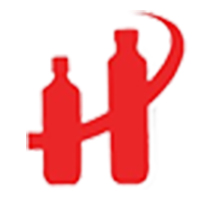In today's competitive market, global buyers are constantly seeking innovative solutions to enhance their operations while maintaining cost efficiency. One such solution that has gained prominence is rigid packaging. Unlike flexible packaging, rigid packaging offers distinct advantages that can significantly impact a company's bottom line. It not only protects products more effectively during transit but also enhances shelf life and improves consumer appeal. As businesses strive to optimize their supply chains and reduce operational costs, understanding the benefits of rigid packaging becomes paramount.
This blog delves into the seven key benefits that rigid packaging can offer for global buyers. From greater durability and reduced waste to enhanced branding opportunities, rigid packaging presents a multifaceted approach to maximizing cost efficiency. By exploring these advantages, organizations can make informed decisions that align with their sustainability goals and operational strategies. Join us as we unpack the transformative potential of rigid packaging and its role in shaping the future of global buying practices.

Rigid packaging refers to materials that maintain their shape and structure under normal conditions of use. This type of packaging is essential for a wide range of products, offering durability and reliability that flexible packaging often cannot match. Common forms of rigid packaging include containers, bottles, jars, and boxes made from materials like glass, plastic, metal, and cardboard. Each of these materials has specific advantages, making them ideal for various applications across industries. Among the notable types of rigid packaging, glass is celebrated for its premium feel and recyclability, making it a popular choice in the food and beverage industry. Plastic, on the other hand, offers versatility and lightweight properties, allowing for efficient transportation and storage. Metal packaging, such as cans, provides excellent strength and an airtight seal, extending product shelf life. Lastly, cardboard and paperboard are widely used for their cost-effectiveness and ease of printing, ensuring brand visibility while being environmentally friendly. Understanding these different types of rigid packaging is crucial for global buyers seeking to maximize cost efficiency. By selecting the right packaging type—aligned with their product specifications and market demands—buyers can significantly reduce waste, protect their products better, and improve the overall consumer experience. The strategic use of rigid packaging can thus lead to enhanced value, making it an essential consideration for businesses aiming for sustainable growth.

Rigid packaging plays a crucial role in optimizing supply chain costs, especially in an ever-evolving marketplace where efficiency is paramount. As global buyers increasingly seek to minimize expenses while ensuring product integrity, rigid packaging offers several advantages that can significantly impact the bottom line. Its ability to provide superior protection against physical damage and environmental factors reduces the risk of product loss during transportation, ultimately leading to lower replacement costs and fewer disruptions in logistics.
Furthermore, rigid packaging designs are often more space-efficient than their flexible counterparts, allowing for better stacking and utilization of storage space. This geometry not only contributes to lower transportation costs but also aligns with the industry's push towards sustainability. With recent supply chain challenges—exacerbated by tariffs and fluctuating input costs—the demand for packaging solutions that can adapt quickly while maintaining cost efficiency has never been greater. By leveraging rigid packaging's robust properties, companies can navigate these complexities and maintain a competitive edge in their respective markets.
The focus on rigid packaging also complements a broader shift towards sustainable practices. Companies are increasingly recognizing that sustainable packaging solutions can lead to enhanced customer loyalty and brand reputation. As buyers prioritize eco-friendly options, rigid packaging manufacturers are innovating with materials and designs that reflect these values, offering not just functional benefits but also aligning with consumer expectations. In this transformative landscape, rigid packaging emerges as a strategic ally for global buyers aiming to balance cost efficiency with sustainability goals.

Rigid packaging is emerging as a powerhouse in the global effort towards sustainability. As environmental concerns continue to dominate discussions across various industries, the advantages of rigid packaging are becoming increasingly significant. For instance, a report by Smithers Pira indicates that the market for sustainable packaging is forecasted to reach $500 billion by 2026, driven by a collective push for green packaging solutions.
One of the key benefits of rigid packaging is its ability to enhance recyclability. Many rigid packaging types are made from materials like glass and high-density polyethylene, which are widely accepted in recycling programs. According to the Sustainable Packaging Coalition, rigid plastics have a recycling rate that has been steadily increasing, with 2019 figures showing more than 29% of rigid plastics being recycled in the U.S. This shift not only reduces waste but also conserves resources, making it a compelling option for manufacturers aiming to reduce their ecological footprint.
Moreover, the durability of rigid packaging contributes significantly to sustainability efforts. Rigid containers protect products better during transportation and storage, thereby minimizing wastage due to damage. A study by the Packaging Efficiency Institute found that adopting rigid packaging can decrease product spoilage by up to 30%, directly impacting food waste reduction. This longevity not only supports sustainable practices but also appeals to consumers who are increasingly mindful of the environmental impact of their purchases.
In summary, the transition towards rigid packaging is a pivotal step for companies targeting sustainability in their operations. By offering recyclability and enhanced product protection, rigid packaging aligns seamlessly with global sustainability goals, paving the way for a more responsible packaging industry.

Rigid packaging is increasingly recognized for its ability to enhance product protection and extend shelf life, making it a valuable solution for global buyers. With a market size projected to reach approximately $101 billion by 2023 and an expected growth rate of 5.1% until 2032, liquid bag packaging exemplifies the benefits of robust materials that secure and maintain the quality of liquid products during transport and storage.
In addition to the liquid segment, the transparent packaging market is projected to value $84.2 billion in 2024, with a compound annual growth rate (CAGR) of 6.1% forecasted through 2034. This growth reflects a rising demand for packaging solutions that not only preserve product integrity but also enhance visibility, further underlining the advantages of rigid packaging.
Moreover, the low-density polyethylene packaging segment is estimated to reach a market value of $20.8 billion by 2024, driven by its versatility and effectiveness in protecting products from external elements. As e-commerce and retail sectors expand, lightweight and robust packaging solutions will be critical for maintaining product quality from warehouse to consumer.
The demand for innovative packaging solutions continues to rise across various industries, and the benefits of rigid packaging in enhancing product protection and extending shelf life are becoming paramount for buyers looking to maximize cost efficiency.
Exploring innovative rigid packaging solutions is essential for global buyers looking to maximize cost efficiency while meeting evolving market demands. The rigid packaging sector has seen significant growth, driven by an increasing focus on sustainability and the need for functional designs that can efficiently transport diverse products. According to the latest market reports, the liquid packaging market alone was valued at approximately $101 billion in 2023 and is projected to grow at a CAGR of 5.1% through 2032, indicating strong demand for innovative packaging solutions.
As sustainability becomes a priority, the global packaging landscape is undergoing a transformation. The shift toward recyclable and eco-friendly materials is compelling manufacturers to innovate within rigid packaging. For instance, the reusable paper and board packaging market is projected to reach $1.9 trillion by 2024, with a CAGR exceeding 5.4% from 2025 to 2034. This transition is driven not only by consumer preferences for sustainable options but also by regulatory pressures pushing businesses to reduce environmental impacts.
Furthermore, the rigid packaging solutions are continuously evolving to meet specific industry needs. As the food and beverage sectors expand, especially with a growing demand for ready-to-eat and convenience products, manufacturers are tasked with creating packaging that maintains product integrity while enhancing consumer convenience. The cosmetic packaging market is also witnessing growth, anticipated to reach $58.8 billion by 2024, fueled by sustainable packaging demands. By investing in innovative rigid packaging solutions, global buyers can position themselves advantageously in this competitive market landscape.
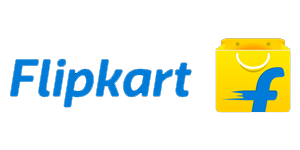
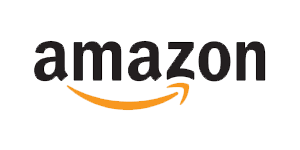
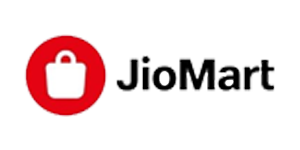
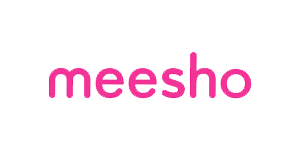
Copyright 2023 Harsh impex, All rights reserved | Designed by LNSEL
